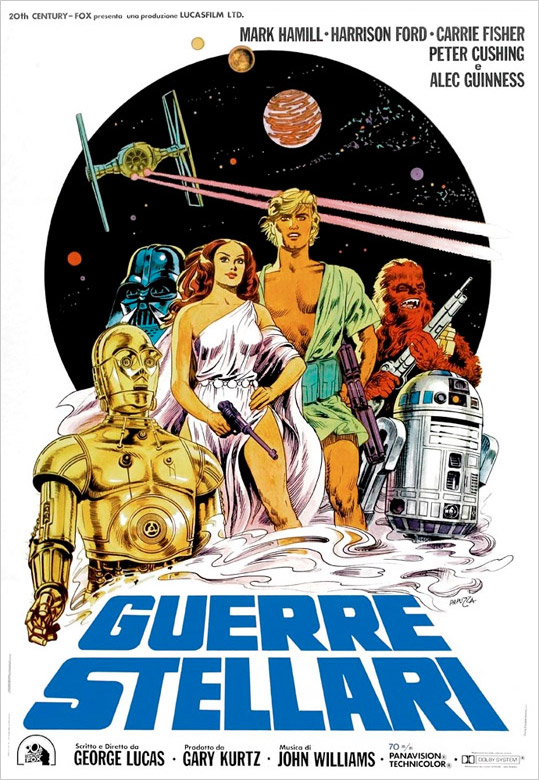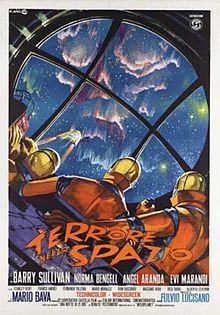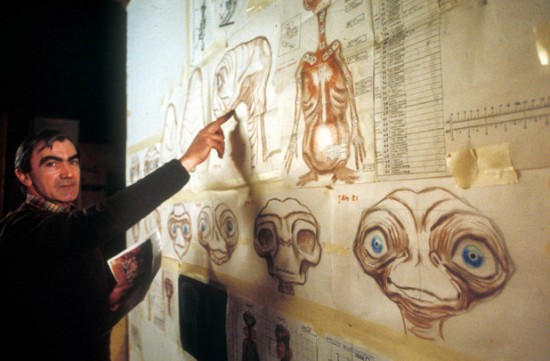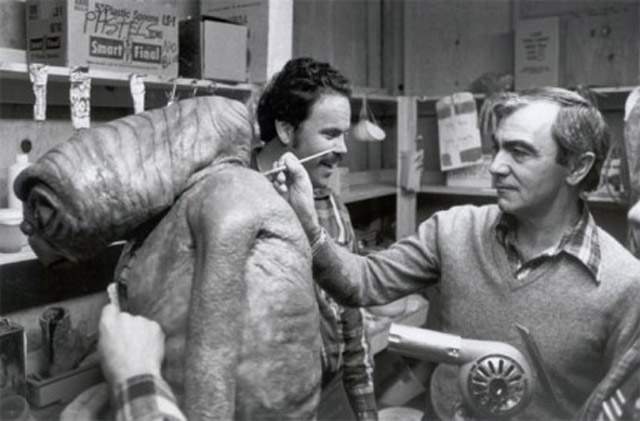Contributions of Italian Film Industry to Science Fiction:
Star Wars:

Italian Film Poster for the release of Star Wars by George Lucas. This poster was designed by Michelangelo Papuzza.
Gian Piero Brunetta in his book “The History of Italian Cinema: A Guide to Italian Film from Its Origins to the Twenty-First Century” brings up an interesting point on that of George Lucas and Star Wars. Lucas, arguably, created one of the most influential science fiction works of all time but he had inspiration but from great films, some of which were Italian. The two directors that are directly mentioned are that of Cottafavi and Francisci who were a large inspiration in both their characters but also environments to the narrative of Star Wars. Brunetta also says that the characters of both Han Solo and Obi-Wan were inspired by the character of Maciste, who is recurring heroic Hercules like figure in Italian cinema. Another example of direct influence to Lucas was that of Sergio Leone with his spaghetti westerns that had landscapes that inspired the look and feel of Tatooine as well as the gunslinger character of Han Solo. While Italian cinema did not directly make a large number of science fiction films the film industry of Italy had an artistry and influence that was seen across the world in all genres. This artistry was directly influencing to Lucas and so many others.
Avatar:
One Italian film may have been the influence to one of the highest grossing films of all time. James Cameron’s Avatar made headlines for being a visually appealing space epic set on a vibrant and colorful planet. This planet had an indigenous race of people known as the Navi and they were tall blue humanoids. However, in the film in order to infiltrate their ranks and convince them to leave their home to mine for a rare mineral element, called unobtanium, they have a machine that places an individuals consciousness into a vessel, or body, of one of the Navi. This was not the first time an idea of this nature shows up in Italian film, in fact its not even the first movie with the name Avatar to have that idea. A lost silent Italian film directed by Carmine Gallone also called Avatar had a very similar premise. A human soul was to enter that of another body. This is identical to that of Camerons main plot point and directly correlates to the Italian film of the same name.
Alien:

Poster of Planet of the Vampires by Mario Bava
Another example of Italian artistry is that of Mario Bava. Mario Bava made many science fiction horror films that had wild and scary premises but one of his films influenced none other than Ridley Scott. Bava’s film Planet of the Vampires is said to have had a very strong influence on Ridley Scott’s film Alien. Bava is seen to be a master of the horror genre and has had a profound influence on the film industry as a whole, not just to Ridley Scott.

A comparison of the environment present in Bava’s Planet of the Vampire(left) versus Ridley Scott’s’ Alien(Right)
E.T. the Extra Terrestrial:
E.T. from E.T. the Extra-Terrestrial directed by Steven Spielberg.
The artistry of Italians was not limited to just influencing that of American science fiction films but they were also directly ingrained into the creative process as well. Carlo Rambaldi is a perfect example. He is a special effects artist and the winner of three Oscars. He has worked on many American films including King Kong, Alien for which he designed the mechanical head effects for the alien, as well as ET. In ET, which he won an oscar for, he was responsible for the design of the title character ET.

A picture of Rambaldi and his charachter sketches for E.T.

Another Picture of Rambaldi, this time working on a 3D model.

